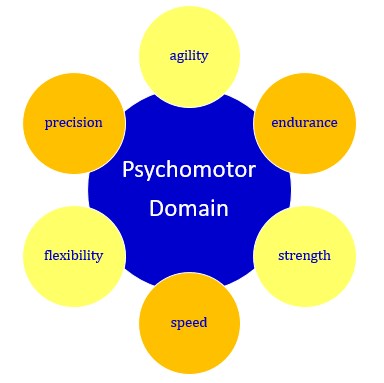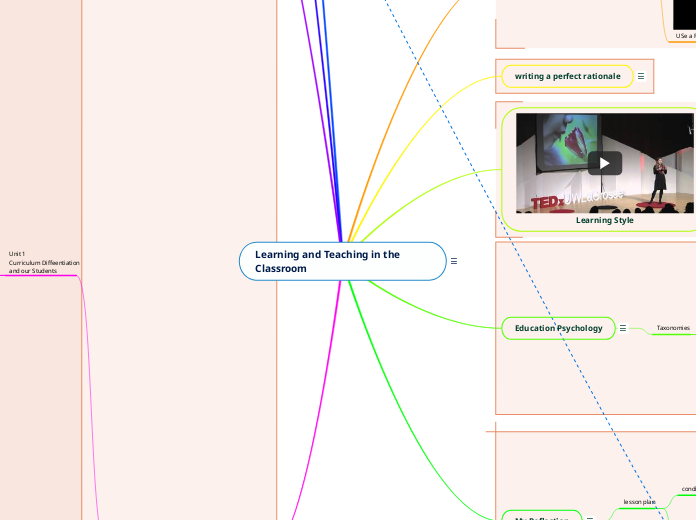Learning and Teaching in the Classroom
Domains of learning
Cognitive
Psychomotor
Affective
Four ways to differentiate
Give Students Choice
Collect Student Data
Step outside the Curricular box
USe a Flipped Classroom Model
writing a perfect rationale
Learning Style
Education Psychology
Taxonomies
cognition
thoughts
Revised blooms
taxonomy
Affects
students feeling and
emotions
transformational teaching
improves self-regulation
instill self directed learning
enhance learning related
capabilities
believes about their capabilities
to acquire, synthsize, anlyze and use
knowledge meaningfully
Psychomotor
physical skills
My Reflection
lesson plan
condition
Centalize Exam Oriented
Curriculum
Community expetation for
a pass in examination
Government expectation
for promotion
Examination timetable
Effects of condition on
3 domains of learning
Taxonomies
Learning STyles
Assessment of Learning Domain
Course Objective CO
Cognitive
1. Remembering
Understanding
Applying
Evaluating
Creating

`
1. Receiving
2. Responding
3.Valuing
Organizing
Characterizing

Psychomotor
1.Perceptions
2. Set
3. Guided Response
4.4. Mechanism
5. Complex Overt Repsonse
6. Adaptation
7. Origination
The Myth of Learning Style
mulitimedea
to suit
1. content
2.knowledge
3.interests
4. abilities
differences
abilities
background Knowledge
interest
Changing Teaching Practices
Unit 1
Curriculum Diffeentiation
and our Students
Teachers
Key to enhancing people's capabilities
key to widens people's choices
in a position to make the goals of
Dakar Frameworkd for Action,
Education for All possible.
social and Professional
responsibilities
reaching out to all the children
ensure the relevancy of their work
make teaching strategy interesting
which could avoid dropouts
give a fair assessment
inclusive education
UNESCO
Resources available
Teacher Education Resource Pack
helps
adapt, modify, and differentiate
teaching for better learning
Barriers to leaning
root
social
financisal
ethnic
lingual
awareness
Different learning styles
different learning backgrounds
learning experience
learning needs
education system
influence of the soiciety
needs to accept the changing
classrooms
Flexibility in attitudes and practices
can help teachers address changing needs
rigid curriculum
pp 12
content loaded examinations
use examination pass
to measure teachers' success
new approach
Envrionment
encourage
Experimentation and
sharing within their own cultural
context
knowledge
teaching
differentiated approach
changing the content
changing the method
changing the assessment
fair assessment
pp 13
learners
different ethnicity
different cultures
sexual orientation
different belief system
knowledge,experiences,
interest, learning profiles
Unit 2
Environmental Strategy
pp 39
Classroom environment
Wlcoming
values each student
equally
create a ssense of community
culturally sensitive
learners
need to feel included
same culture have
a diverse family
could work collaboratively
collaboration
insist on individual accountability
tasks
appealing
engaging
meaningful
complext enough to feel
positively challenged
age level
reflective Discussion
individual goal settings
etc
Unit 3
Instructional Strategies
choices
How to seek information
what they learn
demonstrate what they have learned
start
where they are
facilitate the process
support students
Prior Experience
5 strategies for building upon
student's background
pp 21-25
1. KWL
2. Observation
3. recording
4. word sort
brainstorming
summarizing a text
teaching becomes
a more reflective practice
